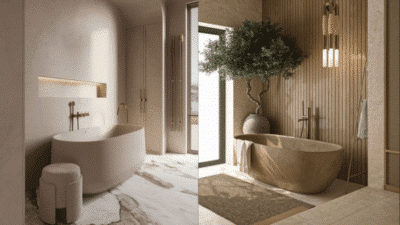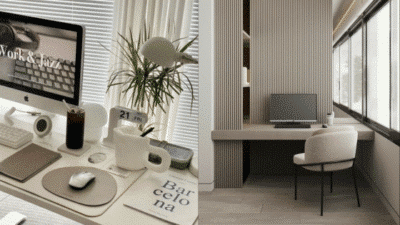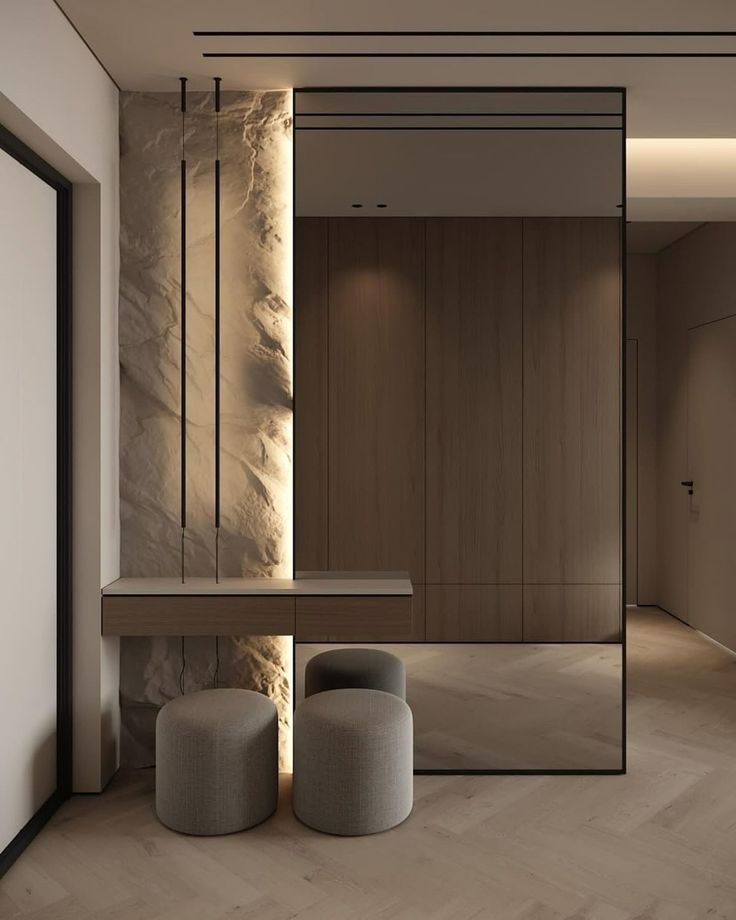
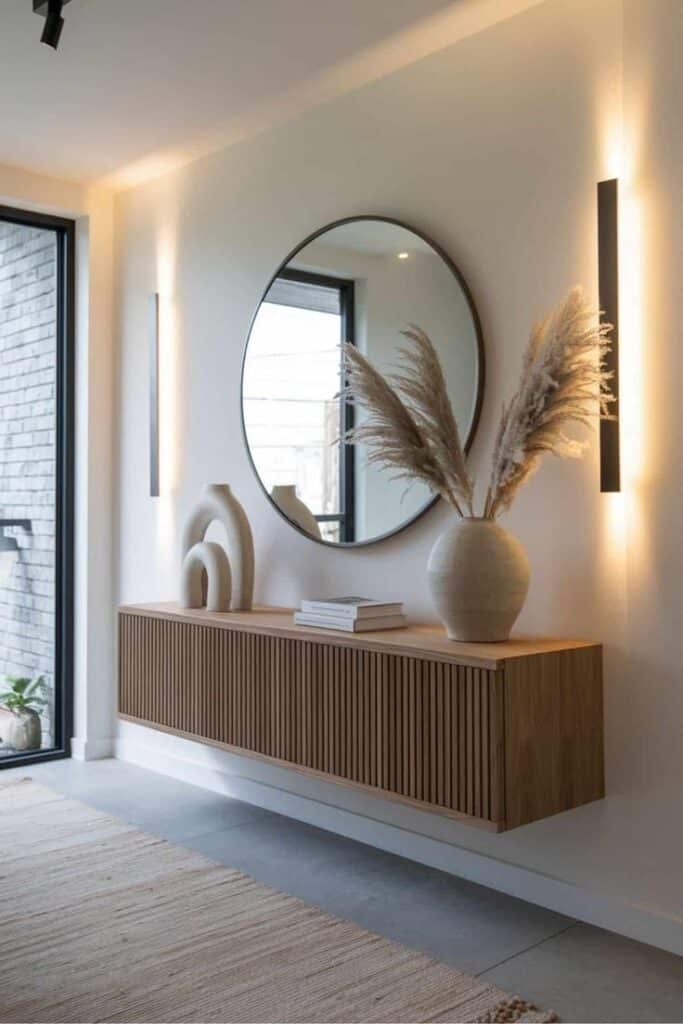
Entryways and hallways set the tone for any home and serve as the first impression for guests. Creating a functional and inviting space in these areas involves thoughtful choices in layout, lighting, and storage.
A well-designed entryway or hallway balances style with practicality, making everyday use easier while adding to the home’s overall look. Simple improvements can transform these often overlooked spaces into organized and welcoming parts of a house.
People who take the time to plan their entryway and hallway design will enjoy both the beauty and convenience these areas bring to daily life.
Key Takeways
- Practical layout and lighting improve functionality.
- Choosing the right furniture and colors enhances appeal.
- Organization and personal touches keep spaces neat and welcoming.
Key Principles of Entryway and Hallway Design
Entryways and hallways must balance size, style, and ease of movement. Careful planning of space, function, and traffic ensures these areas work well and look inviting.
Assessing Space and Layout
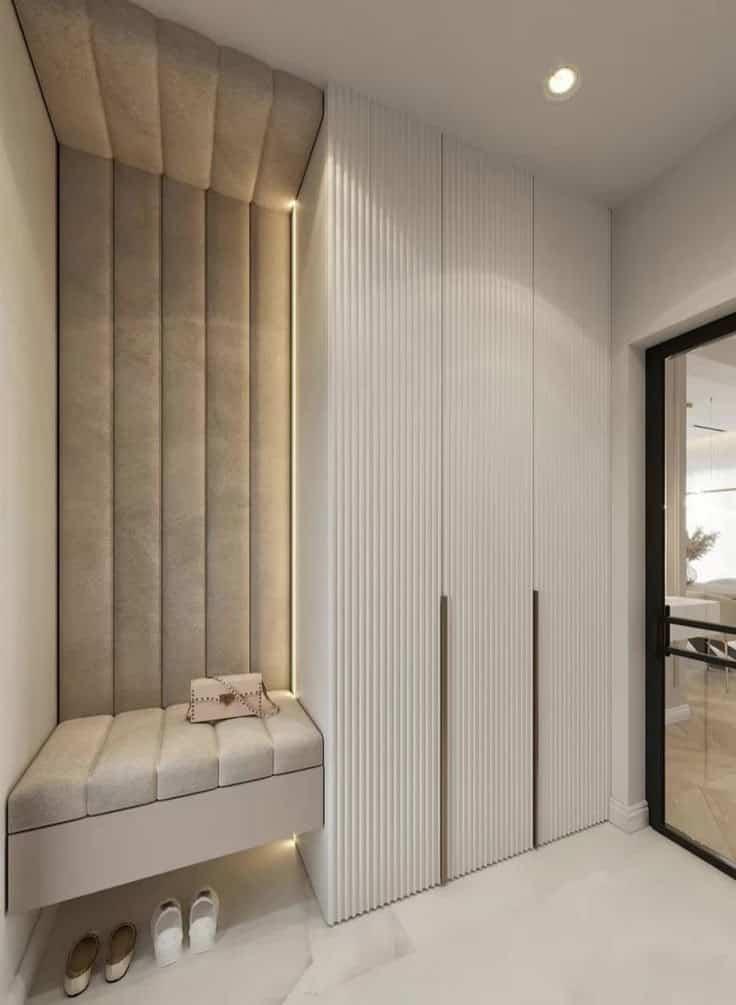
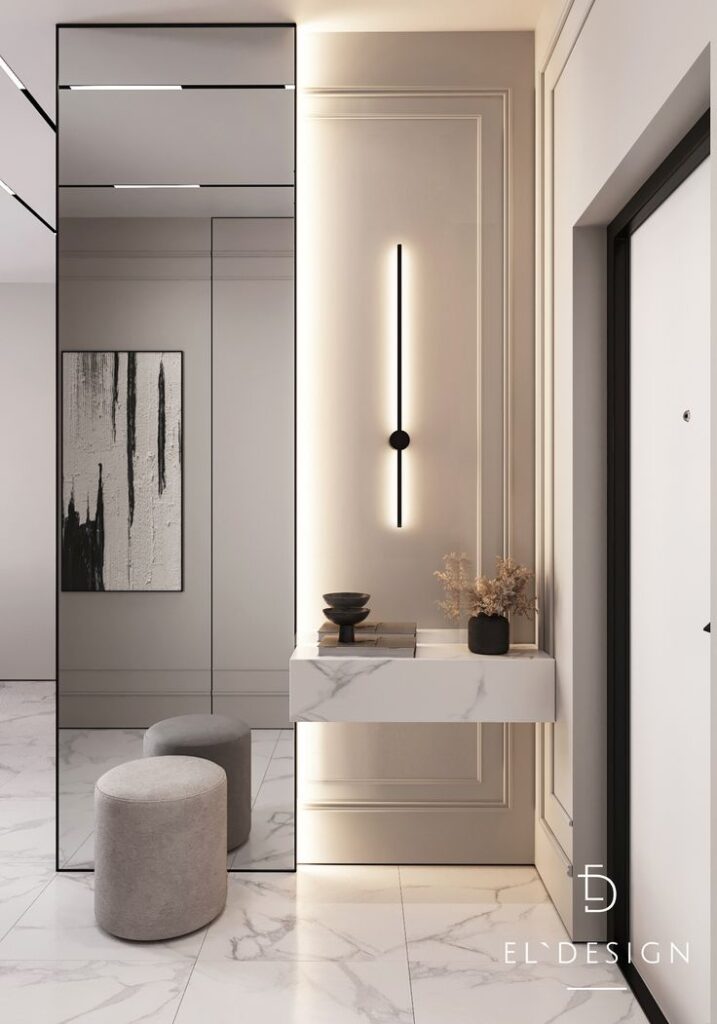
Understanding the size and shape of the entryway or hallway is essential. Small spaces benefit from light colors and slim furniture to avoid crowding.
Large or oddly shaped areas need zones for different uses, like seating or storage. Measuring the space first helps decide what fits without blocking doors or pathways.
She should note ceiling height and natural light when planning. These affect furniture choices and colors. Mirrors can make compact spaces feel bigger and brighter.
Balancing Function and Aesthetics
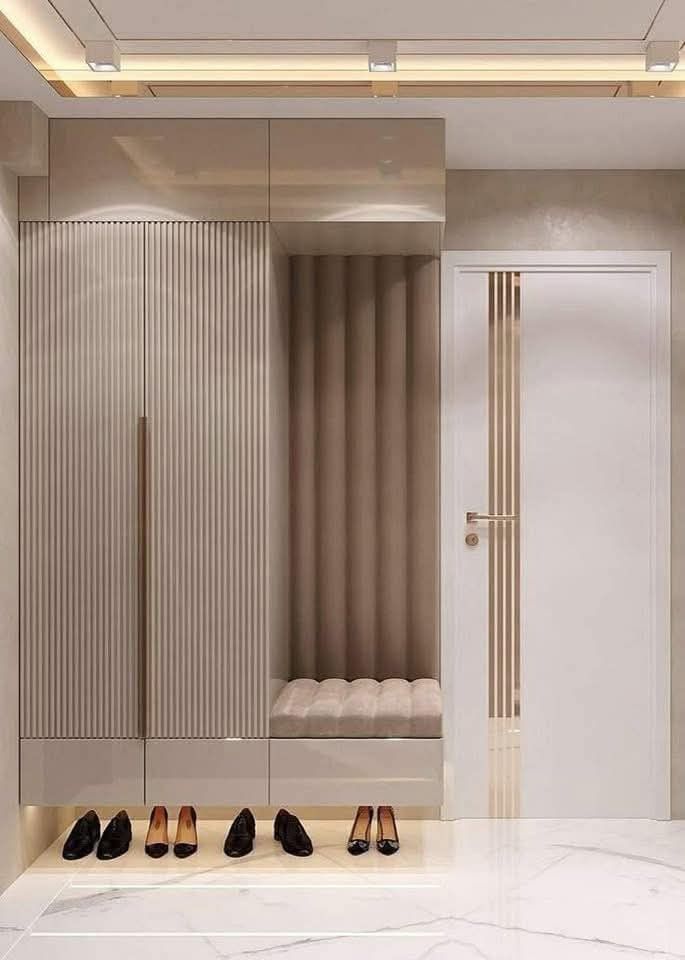
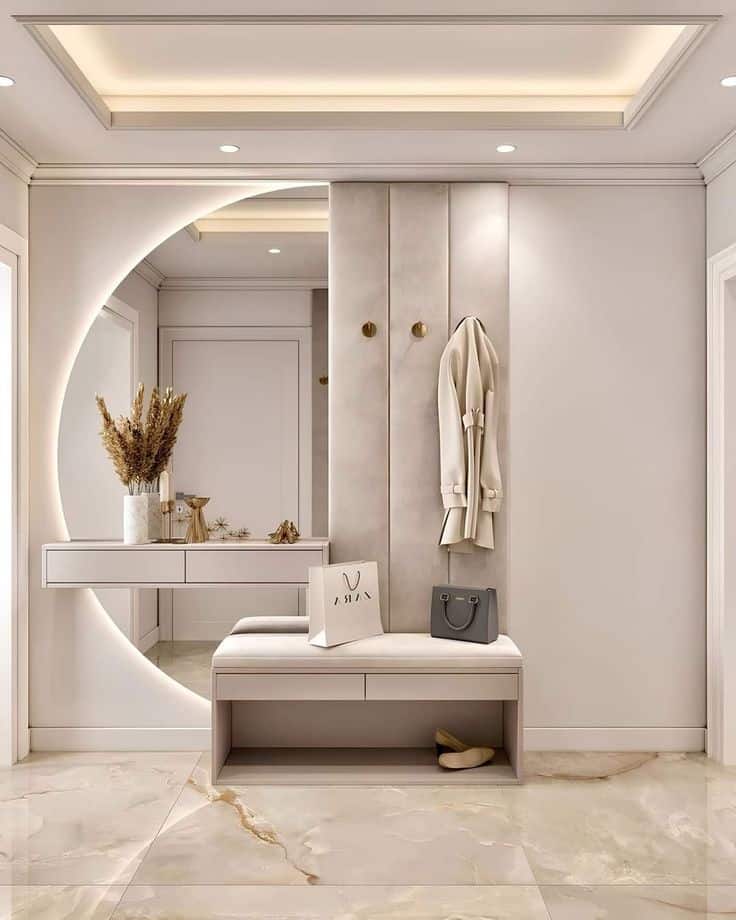
The design must meet daily needs while looking good. Storage like hooks, shelves, or benches keeps clutter off the floor.
Aesthetic choices should tie into the home’s overall style but keep the entryway welcoming. Using durable materials for floors and furniture helps with wear and tear.
Lighting is key to both function and mood. Bright overhead lights work for safety, while softer lamps create warmth. The entryway should feel both practical and inviting.
Traffic Flow Considerations
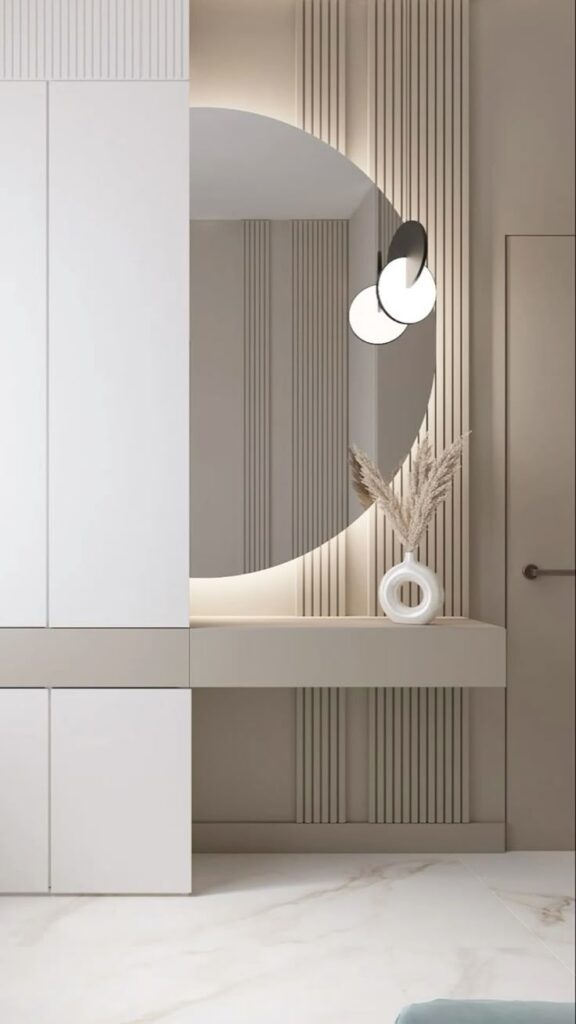
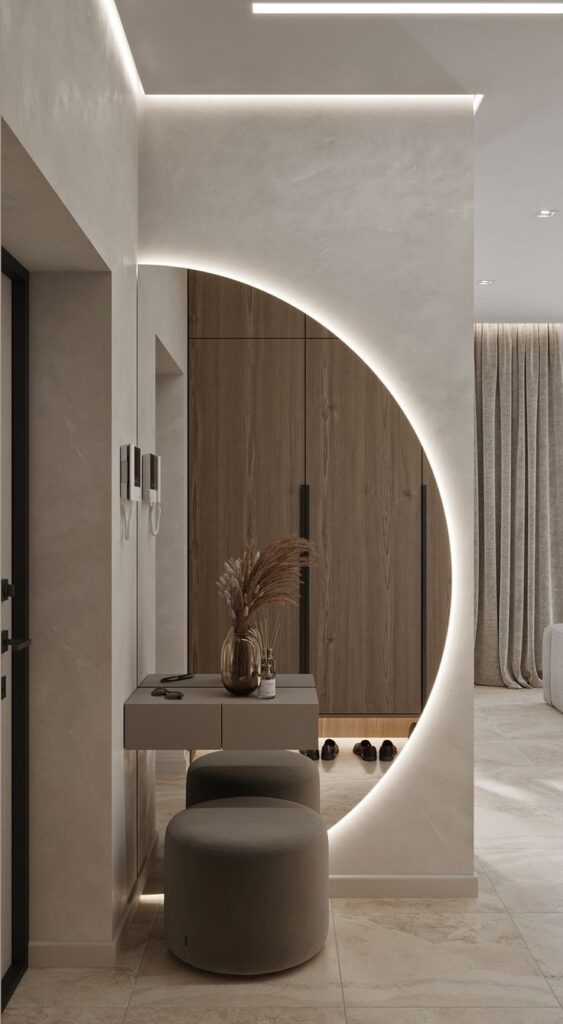
Clear paths prevent bottlenecks in busy entryways and halls. Furniture placement matters: items should not block doors or narrow walkways.
Wide hallways allow for multiple people to pass comfortably, while narrow ones require minimal furniture. Rugs or runners guide eyes and feet along the right path.
She should ensure turning space near doors is free. This helps when carrying bags or moving large items. Good traffic flow reduces accidents and keeps the area efficient.
Color Schemes and Materials
The choice of colors and materials impacts the feel and functionality of an entryway or hallway. Selecting the right tones, flooring, and wall treatments helps create a welcoming space that holds up to daily use.
Choosing Appropriate Colors
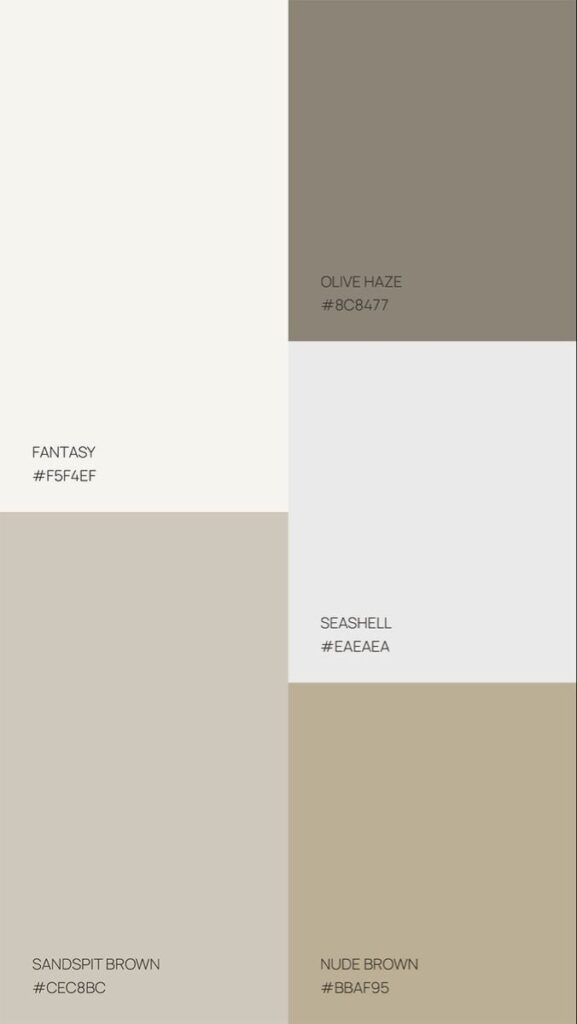
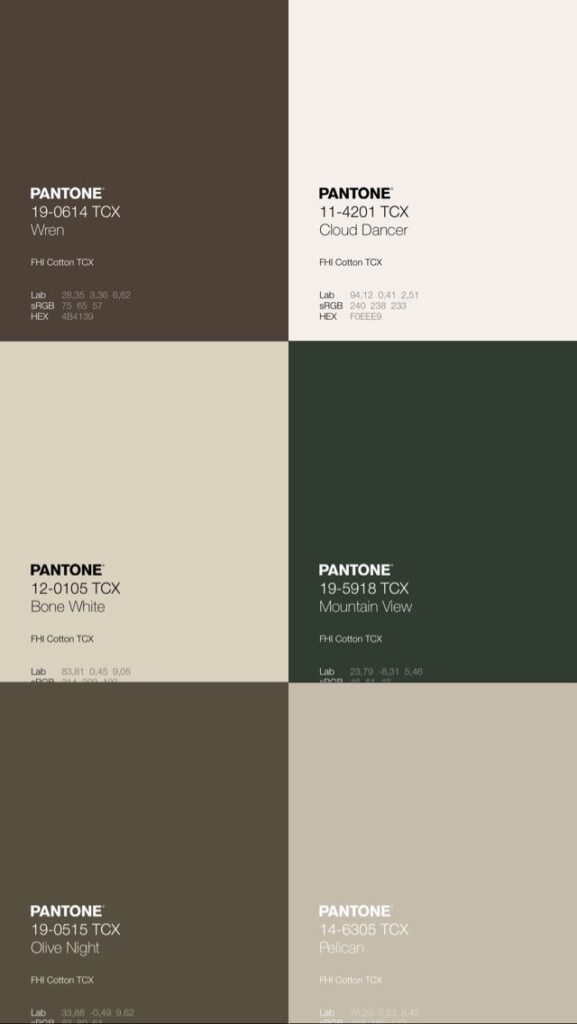
Colors in entryways should balance style with practicality. Lighter shades like soft gray, beige, or pale blue make small spaces feel larger and brighter. Darker colors can add warmth and hide dirt but may make the area look smaller.
Using accent colors on trim or doors provides visual interest without overwhelming the space. Matte finishes reduce glare and hide fingerprints better than glossy paint. It’s important to pick colors that coordinate well with the rest of the home for flow.
Selecting Durable Flooring
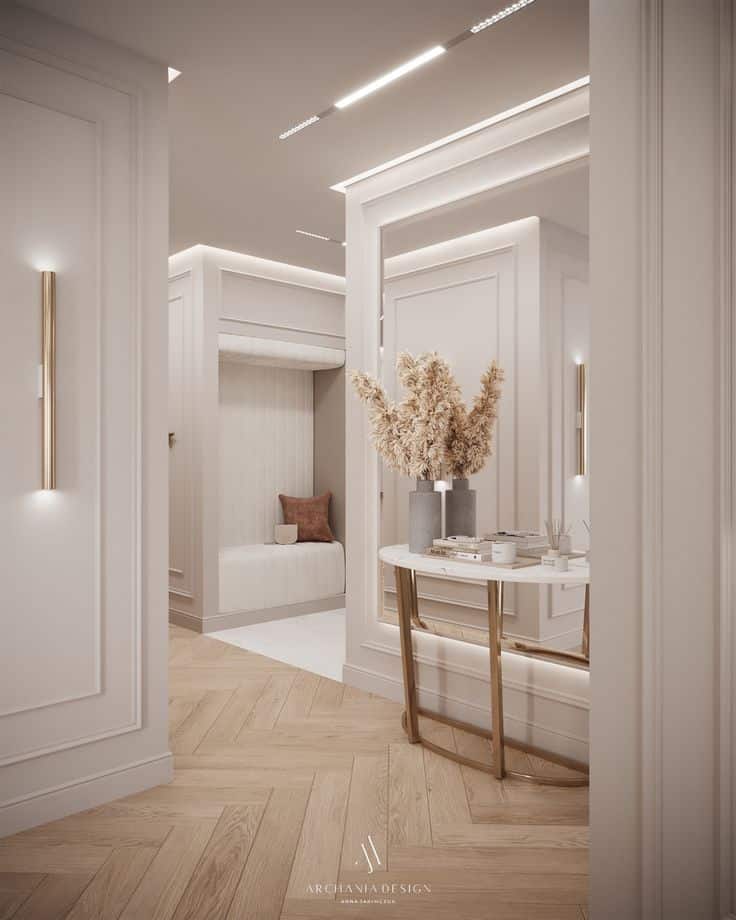
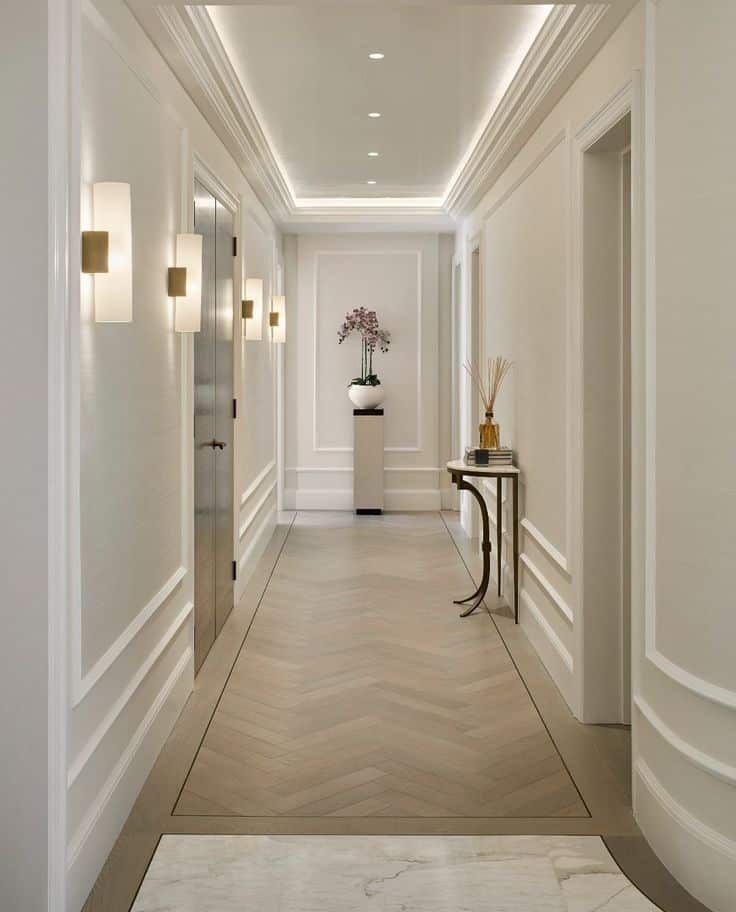
Flooring in high-traffic zones must resist wear, moisture, and dirt. Good options include tile, vinyl, laminate, or hardwood with a strong finish. These materials are easy to clean and maintain.
Consider textured flooring to reduce slipping, especially in wet weather. Mats or rugs can protect floors near doors but should have non-slip backings. Avoid delicate materials like carpet or soft wood that can stain or scratch easily in entryways.
Wall Treatments and Finishes
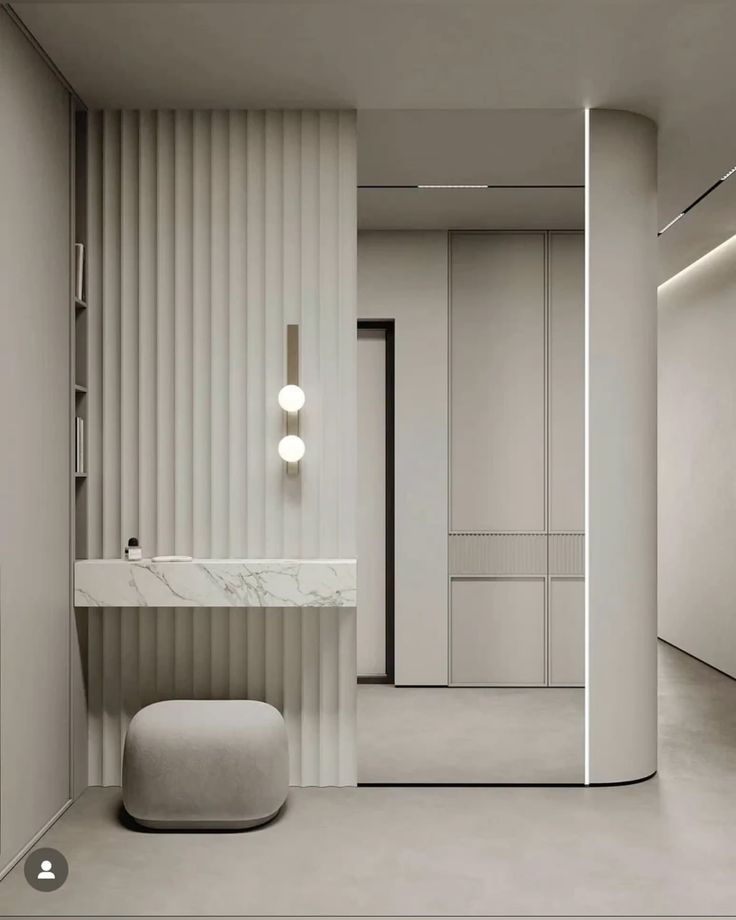
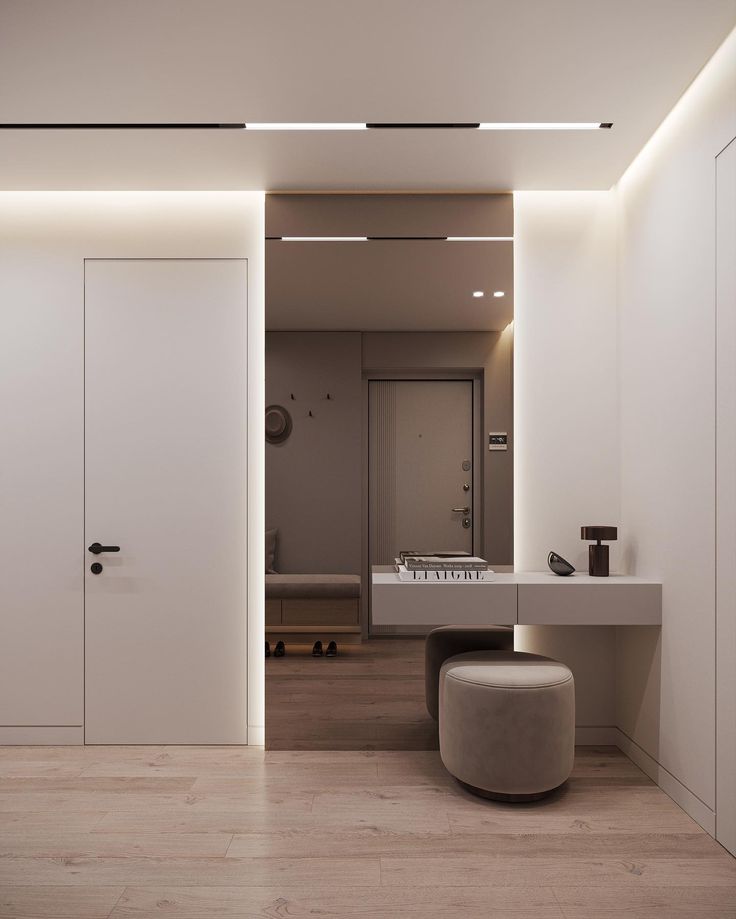
Walls in entryways and hallways get scuffed often, so durable finishes matter. Semi-gloss or satin paints are easier to clean than flat paint. Wainscoting or beadboard adds protection and a decorative touch.
Materials like wallpaper can work if they are washable and resistant to tearing. Wall panels made from wood or PVC offer toughness and can match different design styles. Choose treatments that stand up to bumps and moisture without losing appeal.
Furniture Selection and Placement
Choosing the right furniture for an entryway or hallway is about balancing function and style. The pieces should fit the space while providing storage, seating, and a smooth flow through the area. Each item should serve a clear purpose without crowding the walkway.
Entryway Consoles and Benches
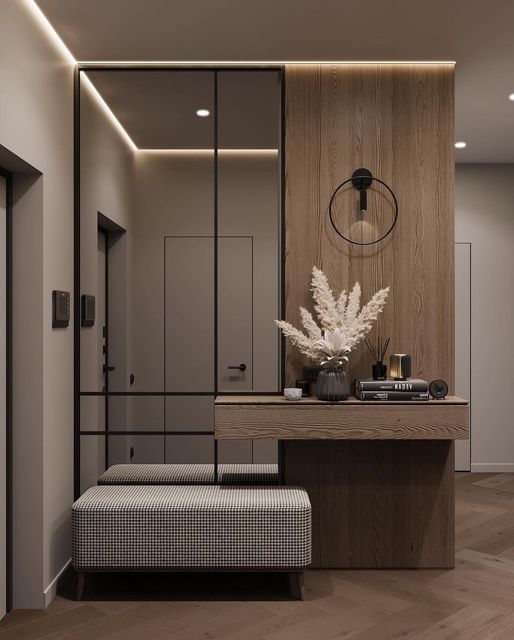
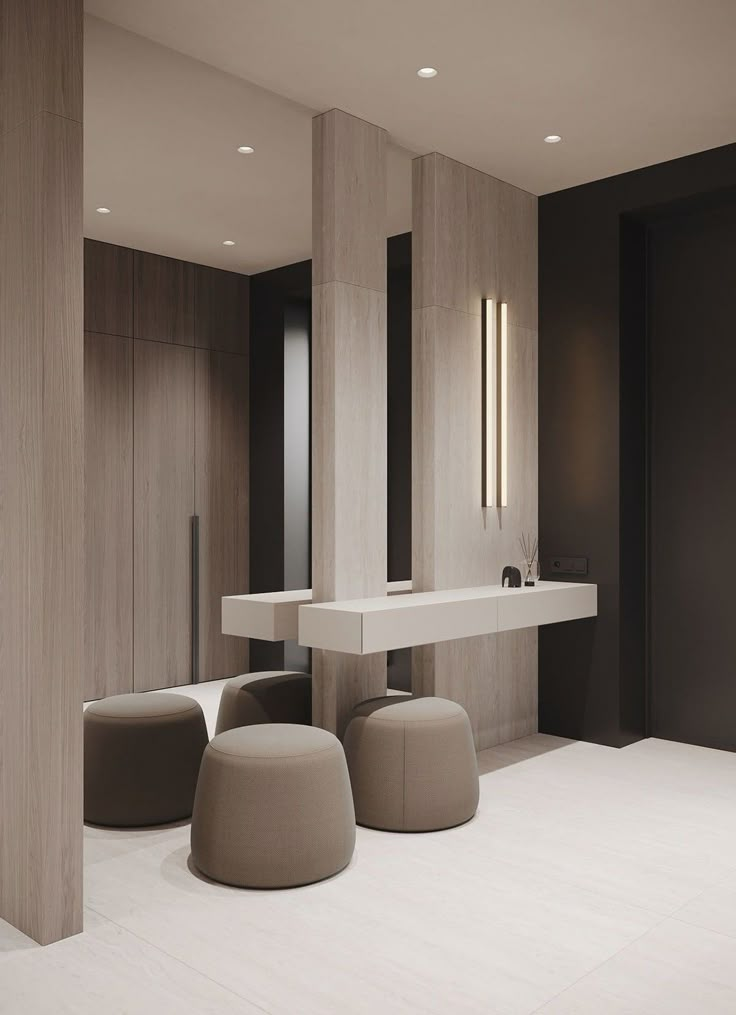
Entryway consoles offer a slim surface for keys, mail, and small décor. They work best against a wall and should be no deeper than 12 to 16 inches to keep walkways open. A console with drawers or shelves adds hidden storage for clutter.
Benches bring both style and function. They provide a spot to sit while putting on shoes. A storage bench combines seating with space inside for shoes or bags. Choose a bench size that fits the length of the hallway but leaves enough room on either side for easy movement.
Optimal Storage Solutions
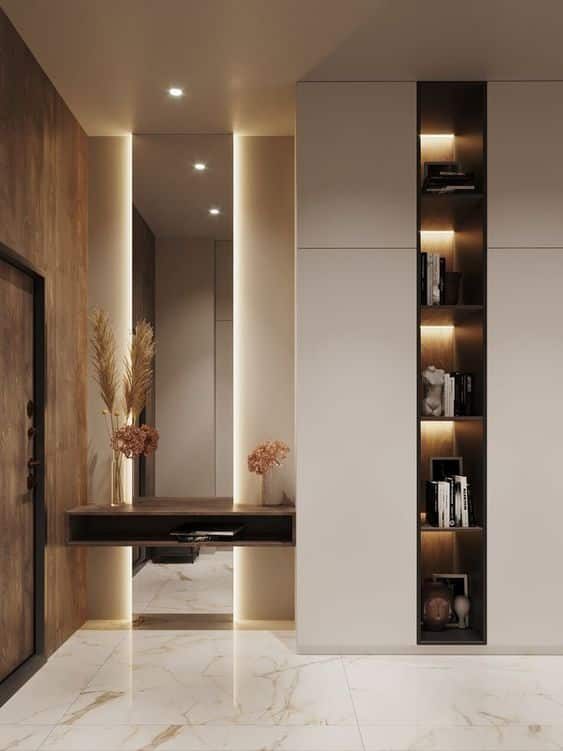
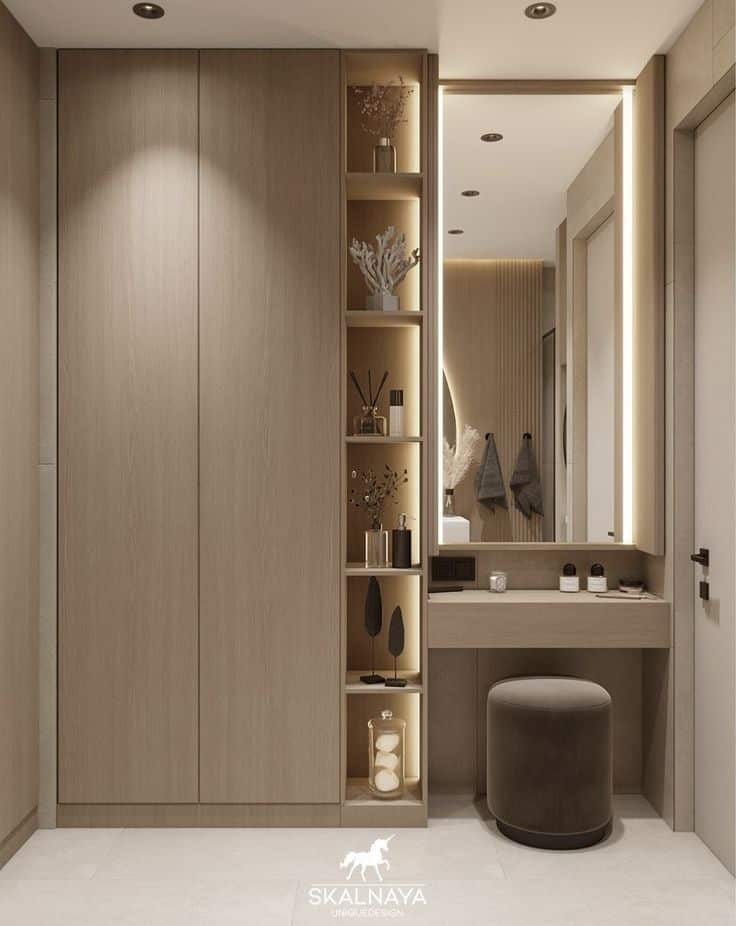
Proper storage keeps an entryway tidy. Wall-mounted hooks or small coat racks give easy access to jackets without taking floor space. Shoe racks or cubbies should be near the door for convenience.
Multi-purpose furniture, like a console with baskets below, maximizes storage in limited areas. Vertical shelving units also save space, helping organize items without making the area feel cramped.
Seating Options for Small Spaces


In narrow hallways, seating must be compact and practical. Slim stools or folding chairs can be used and tucked away when not needed. Wall-mounted fold-down seats offer temporary seating without using floor space.
Ottomans with storage inside are another good choice. They serve as a seat and a place to hold small items like gloves or scarves, which keeps clutter down while providing comfort.
Lighting Techniques
Effective lighting shapes how welcoming and functional an entryway or hallway feels. It balances natural light with artificial options, highlighting features while maintaining practical visibility.
Natural Light Utilization

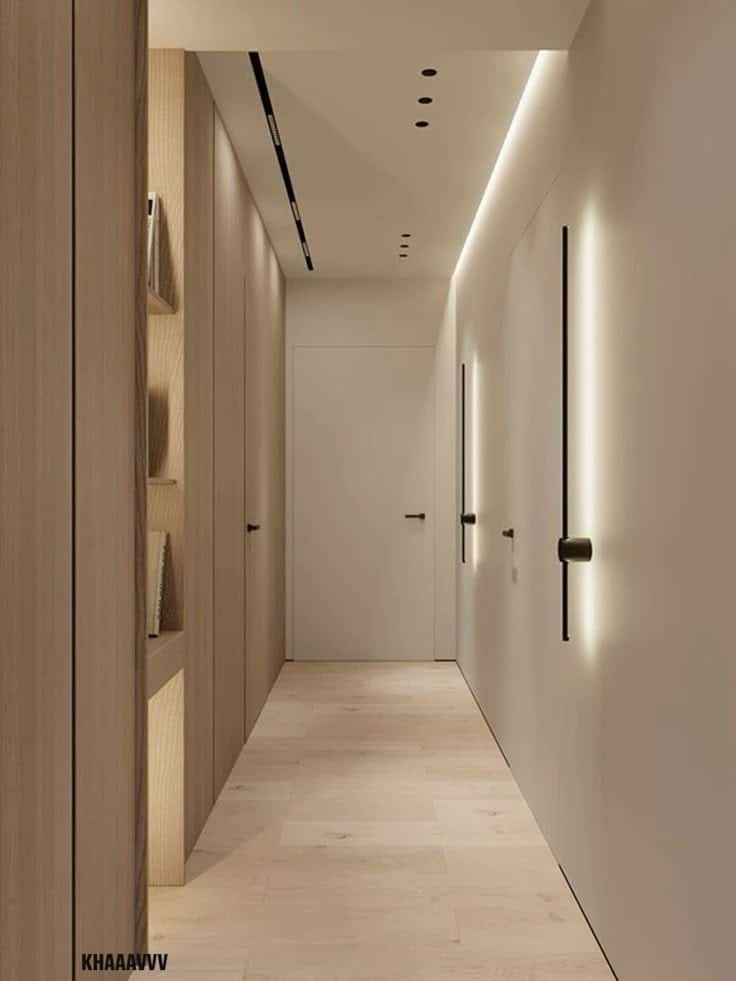
Maximizing natural light helps make narrow or small hallways feel bigger. Using glass doors, sidelights, or transom windows near the entry allows sunlight to flow inside.
Light-colored walls and reflective surfaces like mirrors boost natural brightness by bouncing light around. Sheer curtains or blinds soften harsh sunlight without blocking it completely.
Positioning furniture and décor away from windows avoids blocking light sources. Daylight timers or sensors can adjust artificial lighting during daylight hours, reducing energy use while keeping rooms bright.
Ambient and Accent Lighting Choices
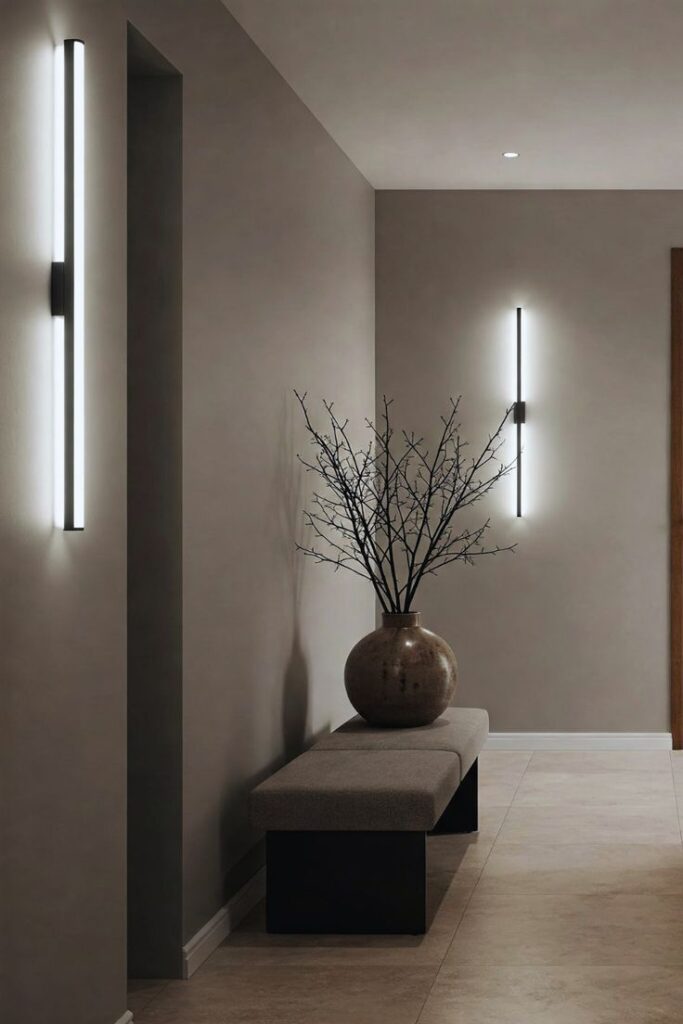
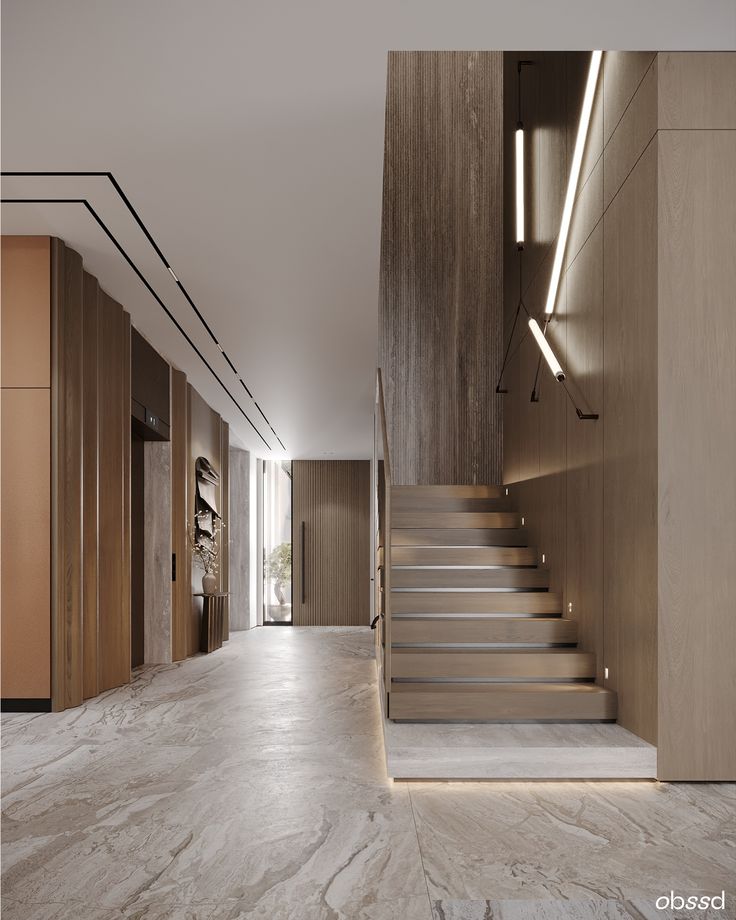
Layered lighting works best for hallways. Ambient light provides overall illumination, often from ceiling fixtures or recessed lights. Choosing LED bulbs with a warm color temperature (2700-3000K) offers a soft, inviting glow.
Accent lighting highlights architectural details, artwork, or storage spaces. Wall sconces and directional spotlights can create visual interest while improving visibility.
Consider motion-sensor lights to enhance safety and convenience. Table lamps or floor lamps near entry benches add both light and style without overcrowding. A dimmer switch lets users adjust brightness for different times or moods.
Organizational Strategies
Keeping an entryway tidy depends on smart use of space and easy access to everyday items. Simple systems make it faster to find what’s needed and keep clutter low.
Coat Racks and Shoe Storage
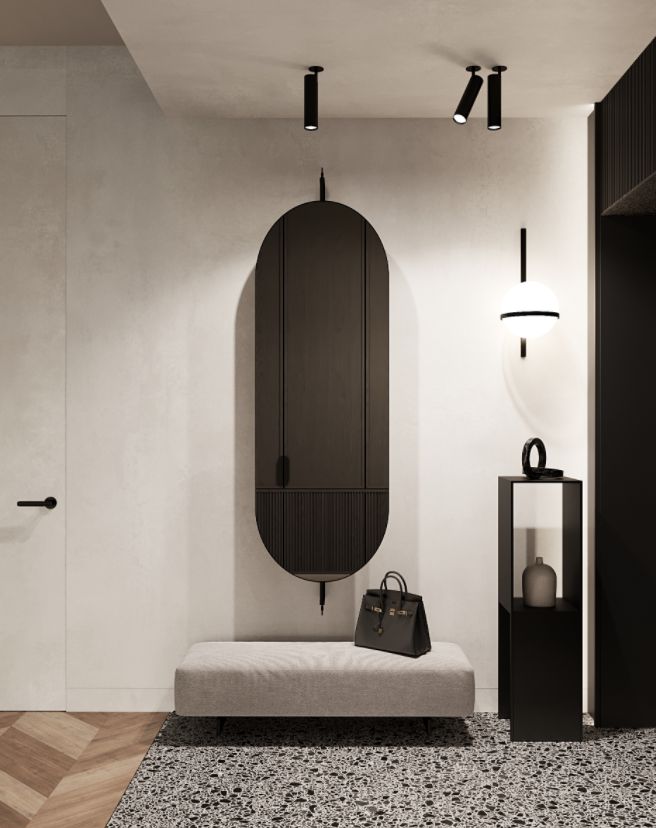
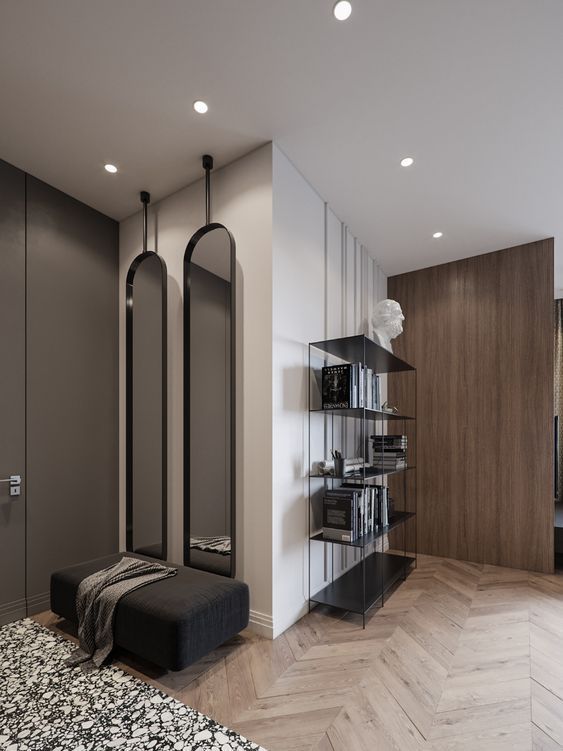
Choosing the right coat rack helps hold jackets, bags, and hats without overcrowding. Wall-mounted racks save floor space and keep things visible. Hooks spaced 6-8 inches apart prevent items from bunching up.
For shoe storage, a bench with cubbies or a shoe rack near the door works well. It keeps shoes off the floor and organized by family member or type. Using closed bins can hide dirt and enhance neatness. Labeling storage spots reduces mix-ups.
Mail and Key Organization
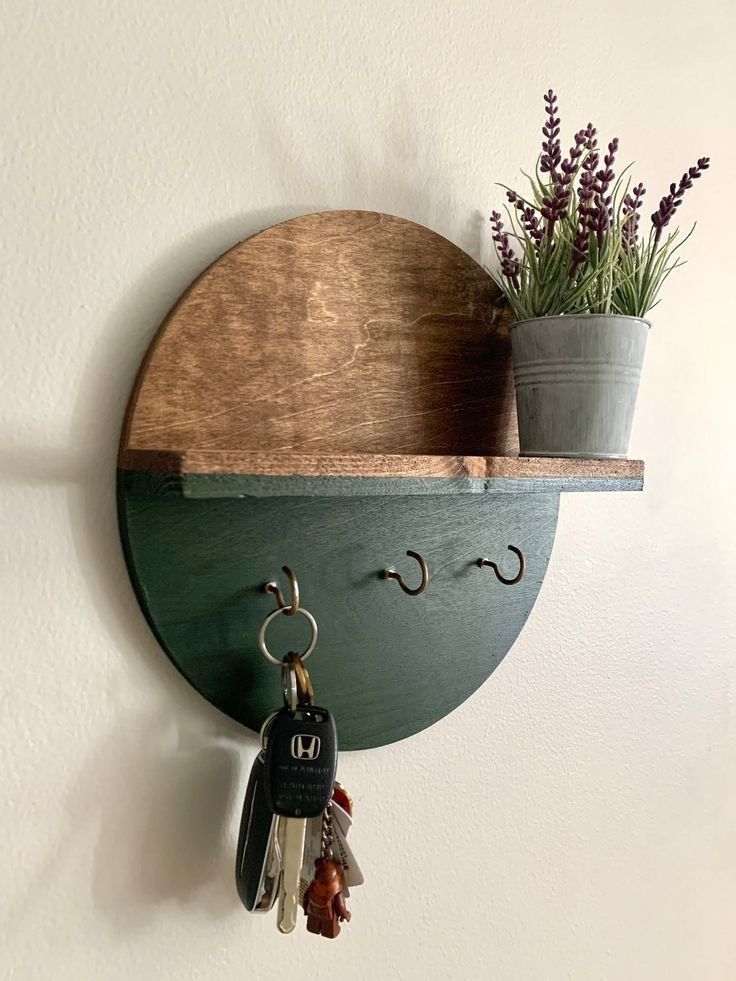
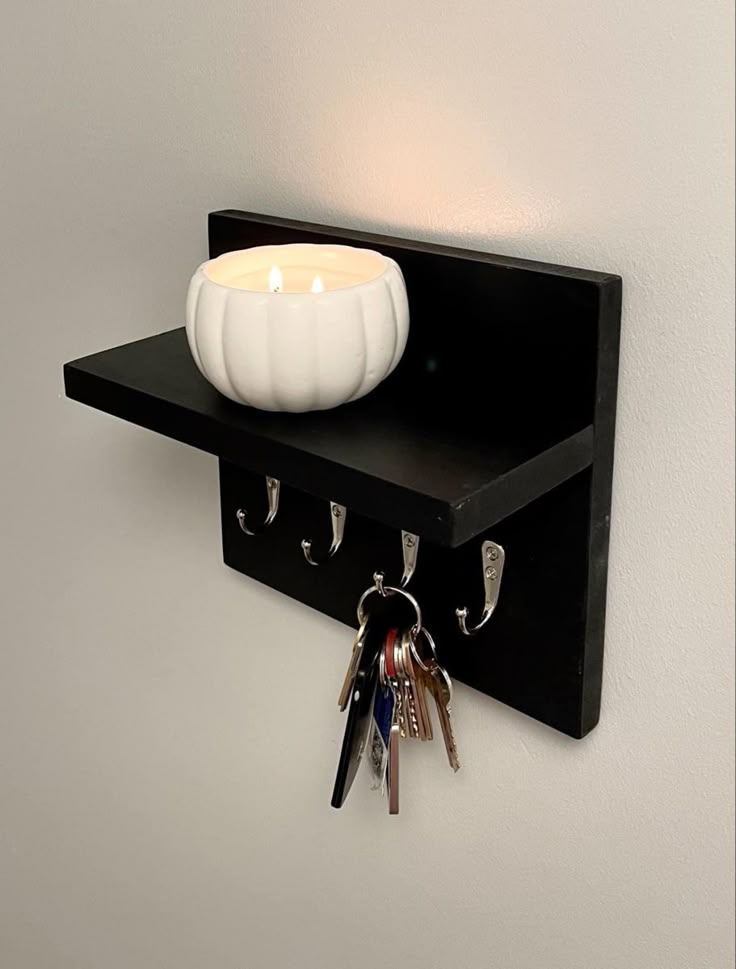
A dedicated mail holder, like a wall-mounted sorter or a small basket, helps keep letters off surfaces. Sorting mail as soon as it comes in avoids piles.
Keys need a simple system too. A small hook, bowl, or key rack near the door ensures keys don’t get lost. Assigning spots for all family members’ keys speeds up daily routines. Some use labeled hooks or color-coded keychains for quick ID.
Decorative Accents and Personal Touches
Decorative accents add personality and interest to entryways and hallways. Using reflective surfaces and meaningful artwork can make these spaces both welcoming and visually appealing.
Mirrors for Depth and Light
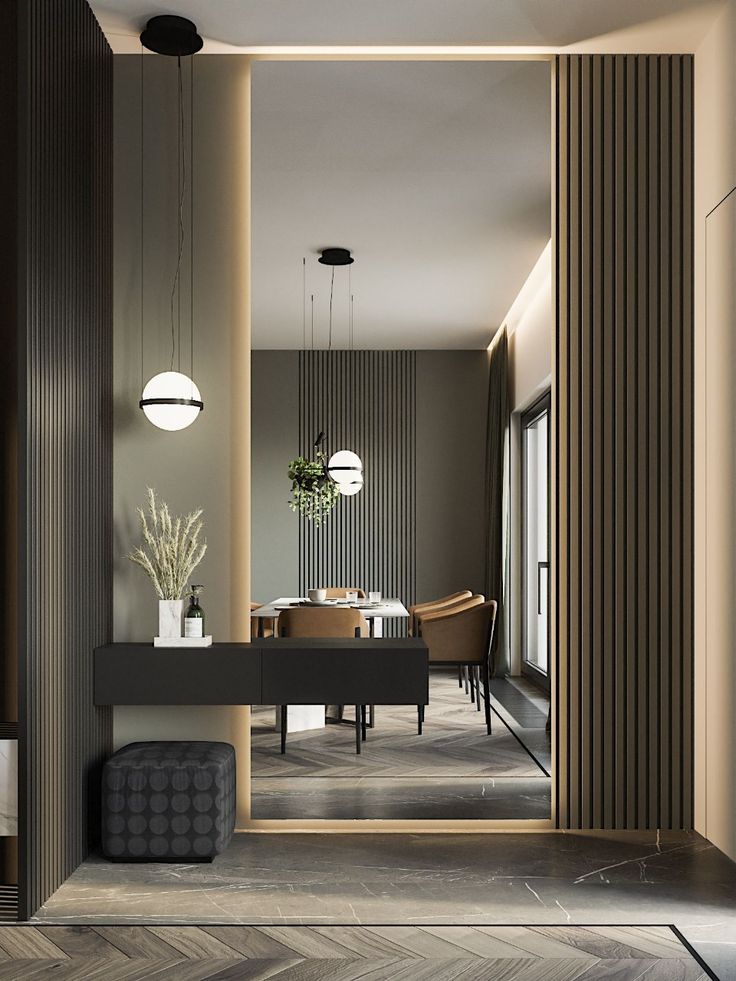
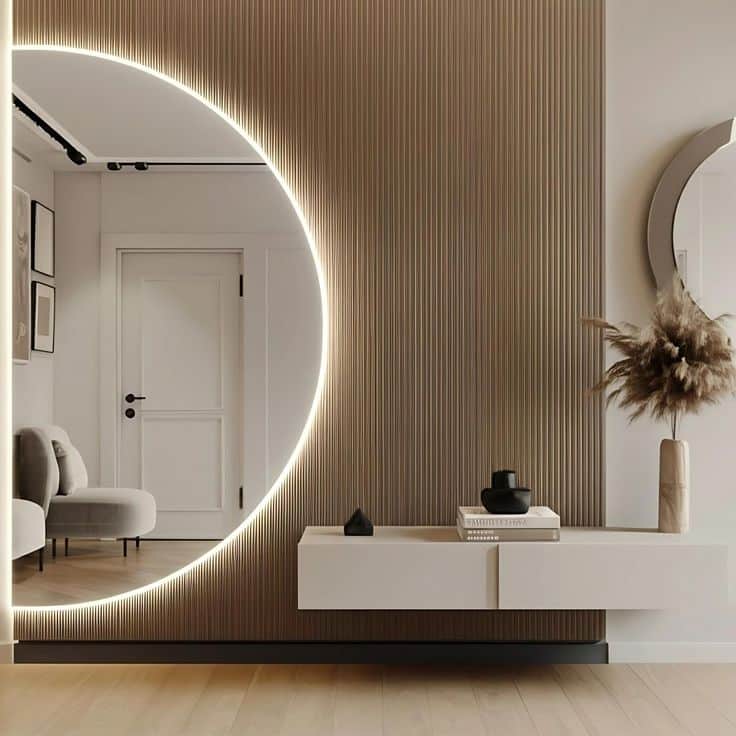
Mirrors help open up small or narrow entryways by reflecting light and creating the illusion of extra space. A large mirror opposite a window can double the natural light that enters the area.
Choosing a mirror with a decorative frame also adds style. For example, a rustic wood frame can bring warmth, while a sleek metal frame fits modern designs.
Placement is key. Hanging a mirror at eye level near the door offers a last look before leaving the house. Mirrors with shelves or hooks add extra function without cluttering the space.
Artwork and Statement Pieces
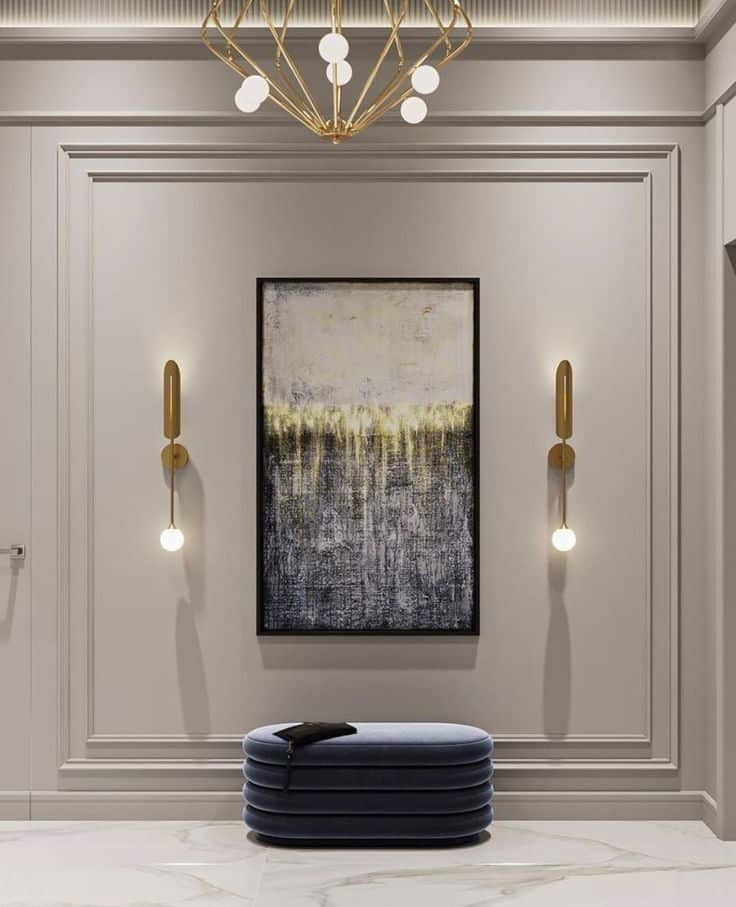
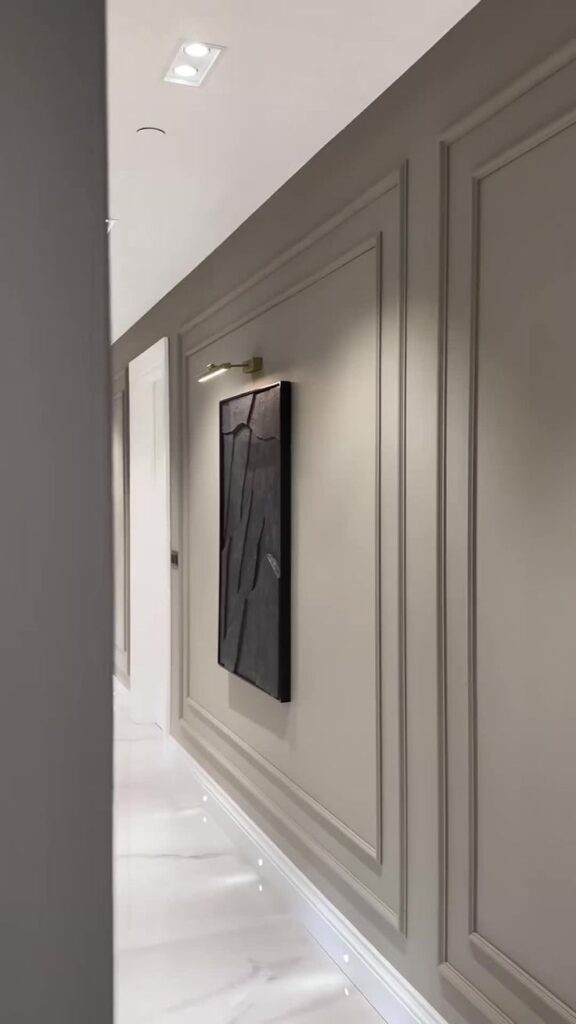
Artwork makes hallways and entryways unique. Choosing bold or colorful pieces draws attention and creates a focal point.
When selecting artwork, consider size and scale. Large paintings or framed photographs work well on blank walls, while a series of small prints can create rhythm and interest.
Statement pieces like a carved wooden sculpture or metal wall art add texture and depth. Personal photos in simple frames also provide a welcoming feel while keeping the design clean.
Using artwork that fits the style of the home helps maintain a smooth flow from entryway to other rooms.
Functional Additions for Modern Living
Modern entryways and hallways blend style with practical features that improve daily life. These spaces often include technology to make homes smarter and design choices that cater to pets’ needs.
Smart Home Integrations
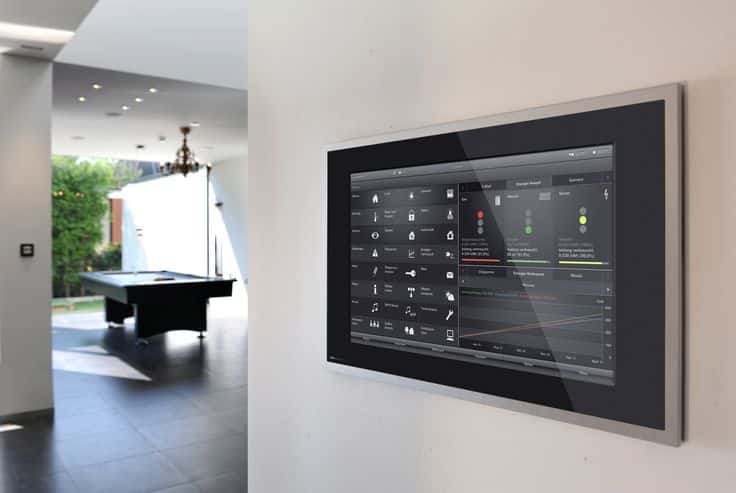
Smart home devices add convenience and security to entryways and hallways. Keypads, video doorbells, and smart locks improve access control. They allow remote monitoring and grant entry without physical keys.
Motion-sensor lighting saves energy by turning on only when needed. Smart thermostats placed near entrances help regulate temperature for comfort when coming in or out.
Smart speakers or voice assistants can be installed here to control lighting, locks, or even announce visitors. These elements create a more connected and efficient home environment.
Pet-Friendly Features
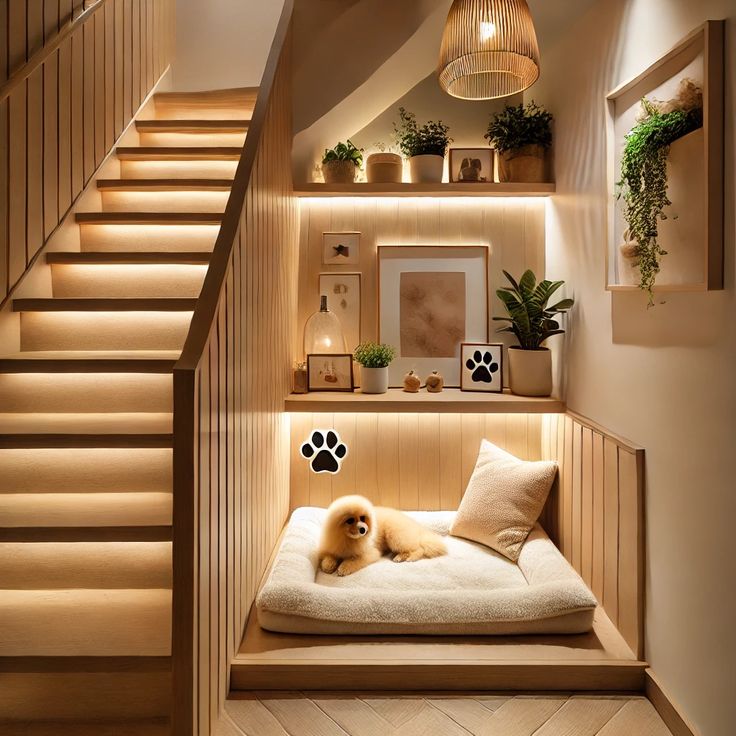
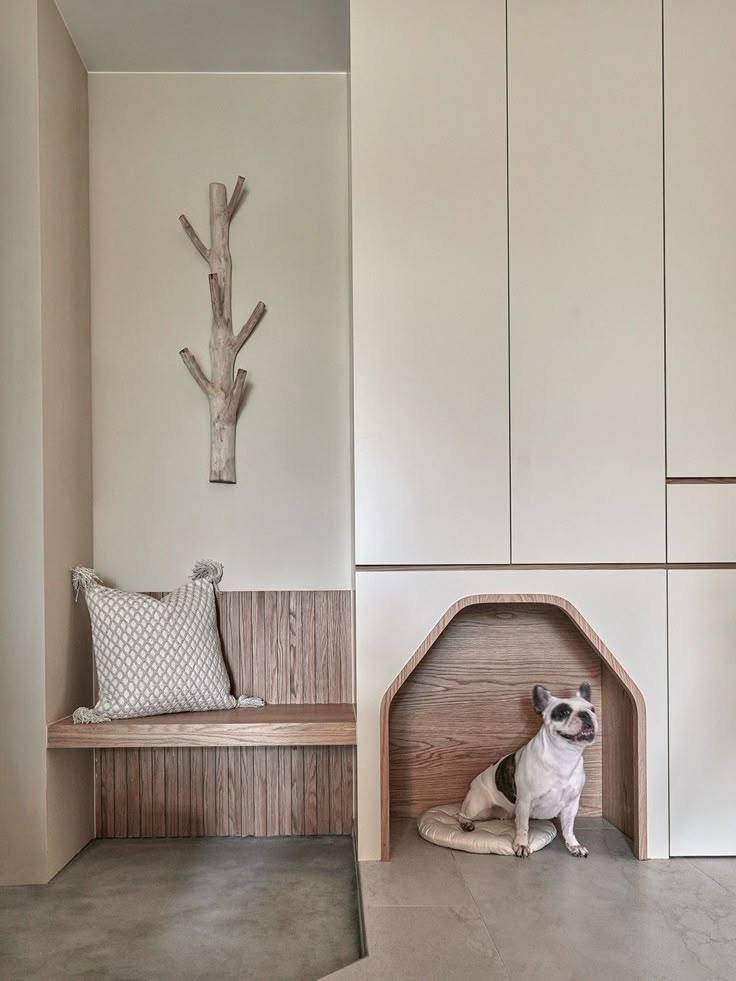
Pet-friendly entryways include spaces designed for animals’ comfort and care. Built-in feeding stations or water bowls near the door keep pets refreshed after walks.
A mudroom area with hooks or shelves for leashes, collars, and toys helps keep things organized. Durable, easy-to-clean flooring reduces wear from paws and dirt.
Pet gates can be fitted to control where animals roam. These simple additions keep both pets and the home safe and well-maintained.
Common Design Mistakes to Avoid
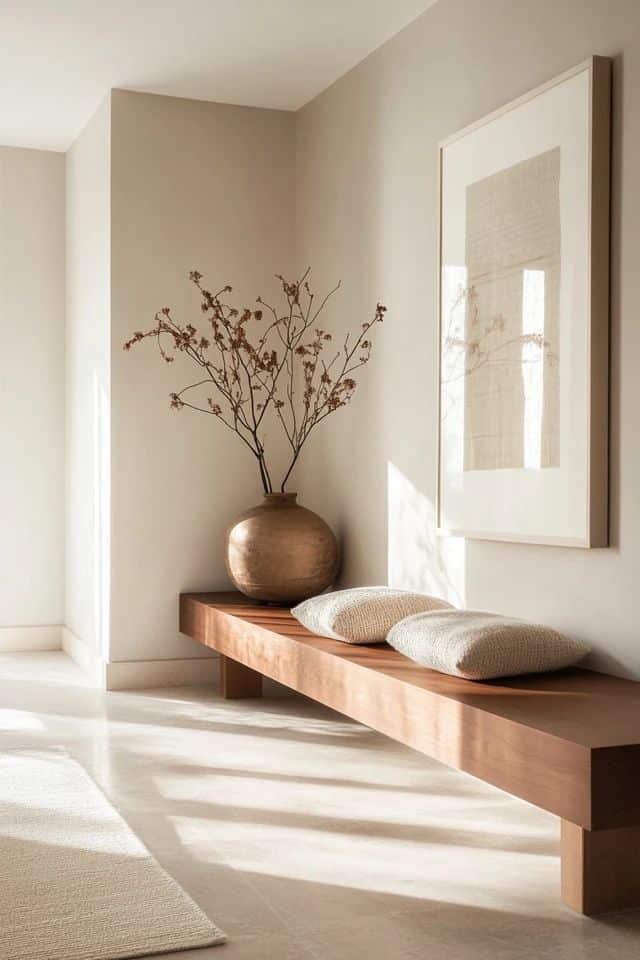
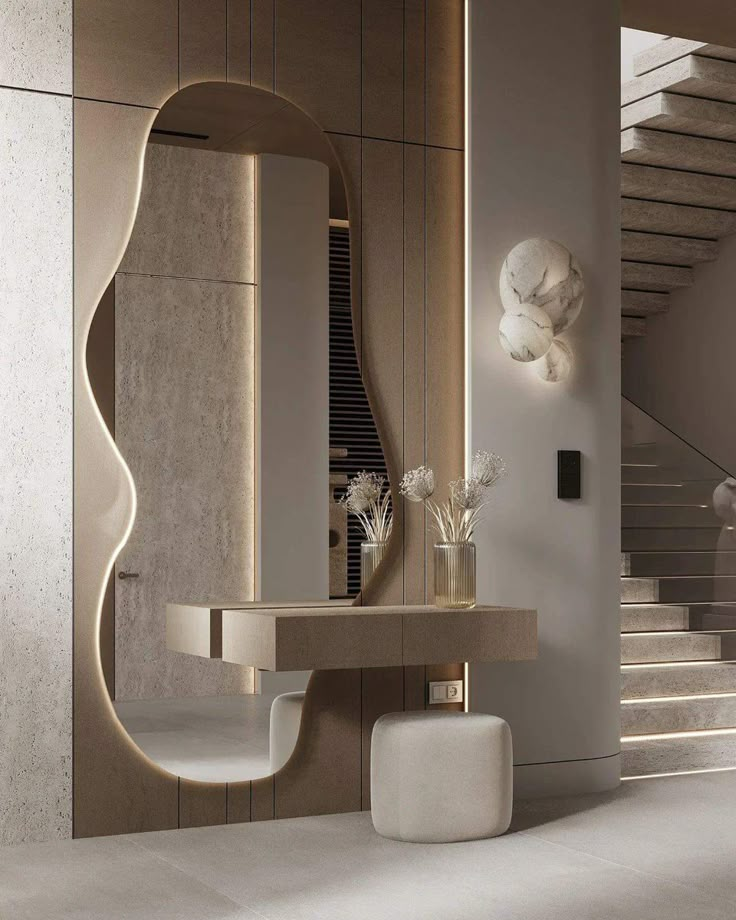
One common mistake is overcrowding the entryway. Too many items can make the space feel small and cluttered. It is important to keep only essential furniture and decor.
Poor lighting can also ruin the look and feel of an entryway. Dim or harsh lights may make the space uncomfortable. Using layered lighting, like a mix of ceiling lights and lamps, helps create a welcoming environment.
Choosing the wrong size rug is another mistake. A rug that is too small or too large can disrupt the flow of the hallway. The rug should fit the space well and allow doors to open easily.
Ignoring storage needs causes problems too. Without proper storage, shoes, keys, and coats can pile up. Adding functional shelves, hooks, or benches can help keep the area organized.
Lastly, neglecting the wall space limits creativity. Blank walls miss a chance to add personality. Simple art, mirrors, or wall hooks can improve both style and function.
| Mistake | Why It’s a Problem | How to Fix It |
|---|---|---|
| Overcrowding | Feels cluttered and small | Keep furniture minimal |
| Poor Lighting | Uninviting or harsh atmosphere | Use layered lighting |
| Wrong Rug Size | Disrupts space and flow | Choose correct rug size |
| No Storage | Leads to mess and clutter | Add shelves or hooks |
| Blank Walls | Misses design opportunities | Add art or mirrors |
Maintenance Tips for Entryways and Hallways
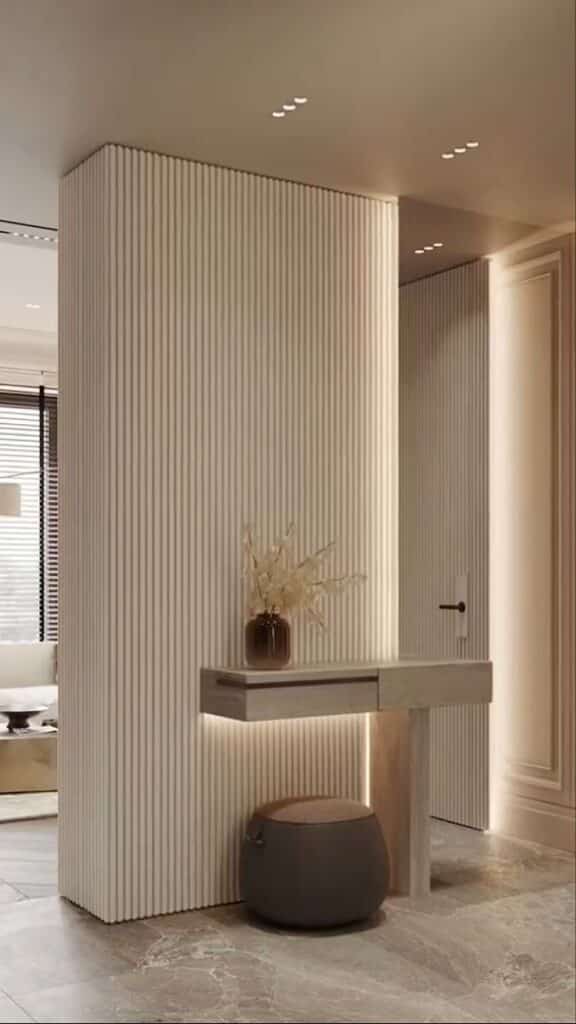
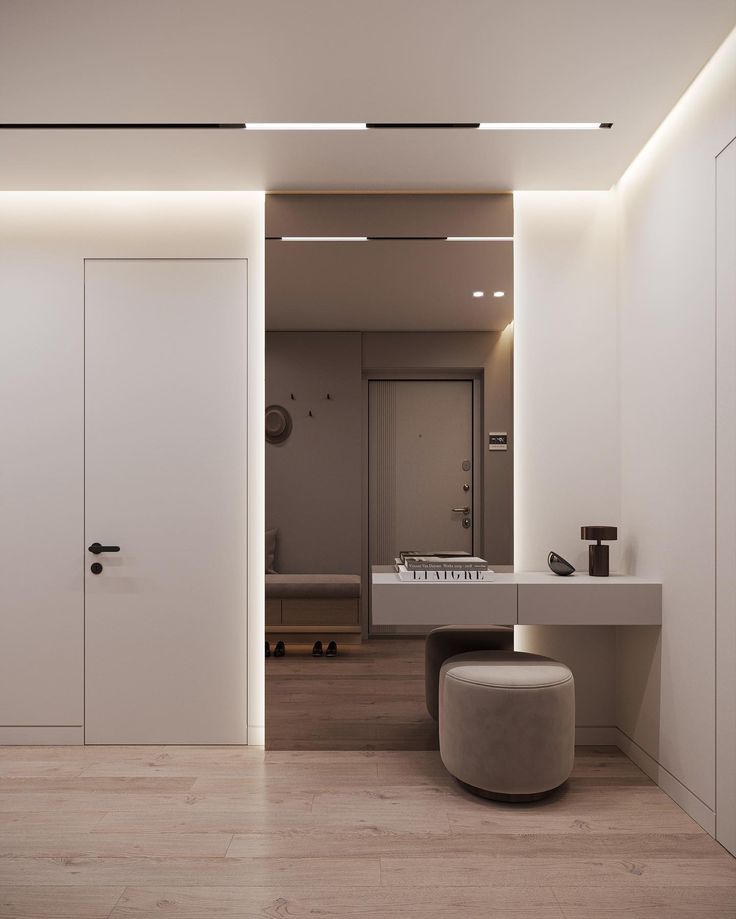
Keeping entryways and hallways clean is important because these areas get a lot of foot traffic. Regular sweeping or vacuuming helps remove dirt before it spreads to other parts of the home.
Wiping down surfaces like walls, baseboards, and door frames prevents dust buildup. Use a mild cleaner to avoid damaging paint or finishes.
For floors, pay attention to spills and stains. Clean them quickly with appropriate cleaners for wood, tile, or carpet to prevent permanent marks.
Shoes can bring in mud and debris, so placing a mat or rug at the door helps. These mats should be shaken out or washed regularly to keep dirt contained.
Lighting fixtures need dusting and bulb checks. Proper lighting keeps hallways bright and safe. Replace bulbs as they dim or burn out.
Storage spots like coat racks and shoe organizers should be tidied often. This prevents clutter from building up and keeps the space functional.
Here is a simple weekly checklist to keep entryways and hallways in good shape:
| Task | Frequency |
|---|---|
| Sweep/vacuum floors | Twice a week |
| Wipe down surfaces | Weekly |
| Clean mats and rugs | Weekly |
| Dust light fixtures | Biweekly |
| Organize storage | Weekly |
Following these steps helps maintain a neat and welcoming entryway or hallway.
- 438shares
- Facebook0
- Pinterest438
- Twitter0

